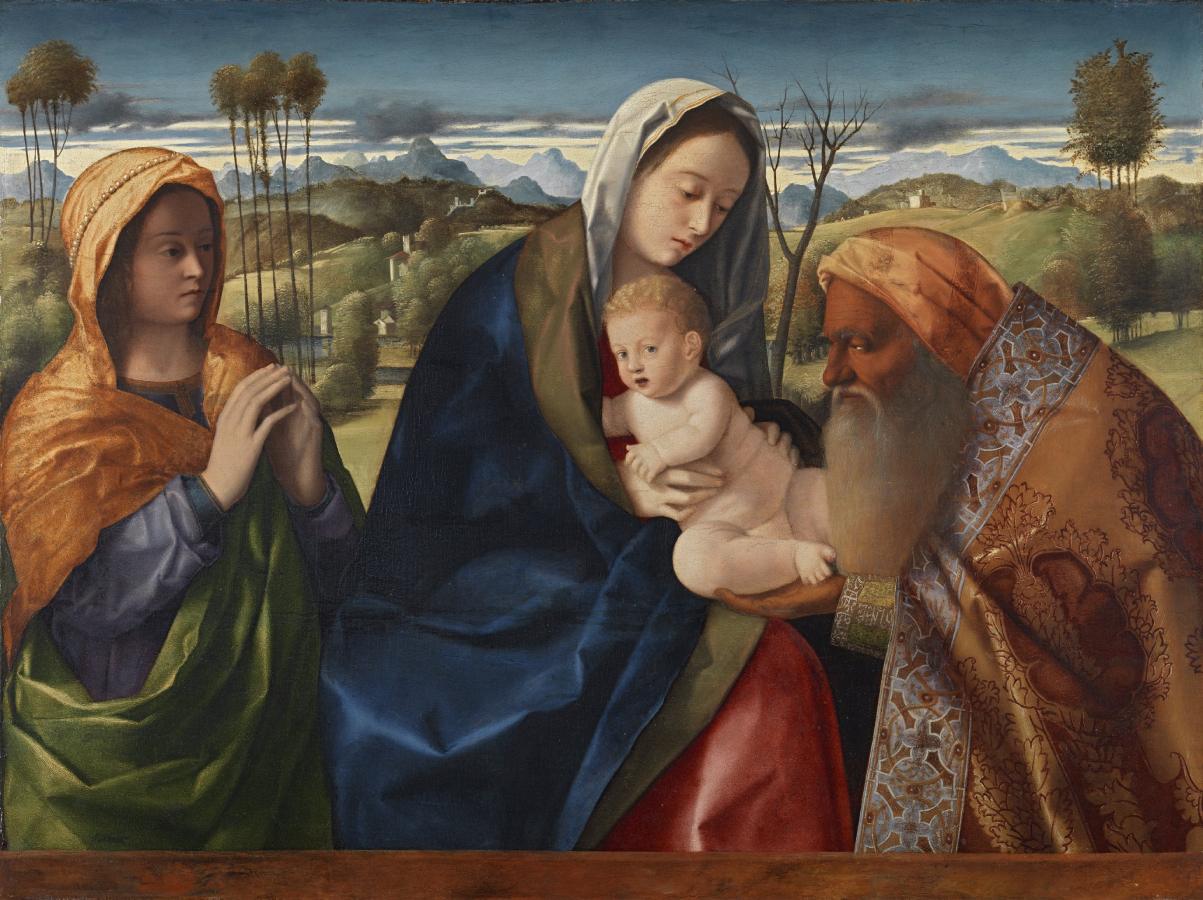Bellini, Giovanni (c.1430-1516)
Nunc Dimittis (Now You let depart)
c.1505–1510
Oil on panel, 62 x 82.5 cm
Museo Thyssen-Bornemisza, Madrid
Considered in his later years to be the greatest Venetian painter of his time, Giovanni Bellini was the teacher of the leading Venetian artists of the next generation. Among them were Giorgione and Titian, who disseminated a new style, the origins of which lie in Bellini’s art. During his second trip to Venice, at which time he painted Jesus among the Doctors, Dürer noted that Bellini (by then in his seventies) was “still the best in the art of painting”. Bellini was responsible for the transformation of Venetian painting, which passed from being one regional school among many in Italy to being the centre of a modernising aesthetic that enjoyed international reputation and renown. It could be said that the qualities that define Venetian painting and which reached their maximum expression in the 16th century originated with Bellini, an artist of enormous creative capacity. The use of the landscape, the harmonious relationship between figures and nature, the interest in rich, saturated colour, atmospheric effects and broad, curving forms to be found in his prolific oeuvre, would all define the future course of Venetian painting.
Nunc dimittis entered the Thyssen-Bornemisza collection in 1964. The panel had previously belonged to the collection of count Pourtalès and was included in an exhibition at the Portland Museum of Art in 1944 entitled Eight Masterpieces of Painting.
The panel, whose subject has been interpreted in two different ways, has been dated to the first decade of the 16th century. During this last phase in his career Bellini used a highly innovative style that reveals his enormous creative capacities. The present painting is one of a group of works intended to be used for private devotion. Like his Virgin and Child compositions they were in great demand in their time. Published in 1962, the present panel was studied by Pallucchini in 1964, who considered it to be autograph. Rosenbaum doubted the attribution and considered the panel to involve at least a high degree of workshop participation. Rosenbaum’s opinion was rejected by Pallucchini in a document of 1984 now in the Museum’s archive, in which he repeated his opinion of 1964.
In order to establish the panel’s date and attribution Pallucchini referred to three other works by the artist: Sacra Conversazione in the Gallerie dell’Accademia in Venice, in which the Virgin and Child are set in a landscape flanked by Saint John the Baptist and a saint; The Virgin of the Meadow (National Gallery, London), in which Mary is seated on a dense bank of plants and flowers in front of a landscape with the Child asleep on her lap; and The Presentation in the Temple (National Gallery, London), in which the figure of a priest recalls that of Simeon in the present work. Both the Venice painting and the present panel include a parapet below the figures, on which Bellini placed his name in the case of the Venice painting.
In 1964 Hendy identified the subject of the panel as the meeting of Simeon and the Infant Christ just before the entry into the temple where the Presentation takes place, an episode recounted in the Gospel of Saint Luke. Hendy identified the richly dressed figure on the right bending to receive the Infant Christ as Simeon. In Hendy’s opinion Bellini’s innovation in this panel lies in the replacement of the interior or porch setting traditionally used for this episode with the broad, atmospheric landscape with the Alps in the background. Hendy also proposed the title of Nunc dimittis, the words with which Simeon received the Infant Christ in his arms.
Mar Borobia (T-B)
